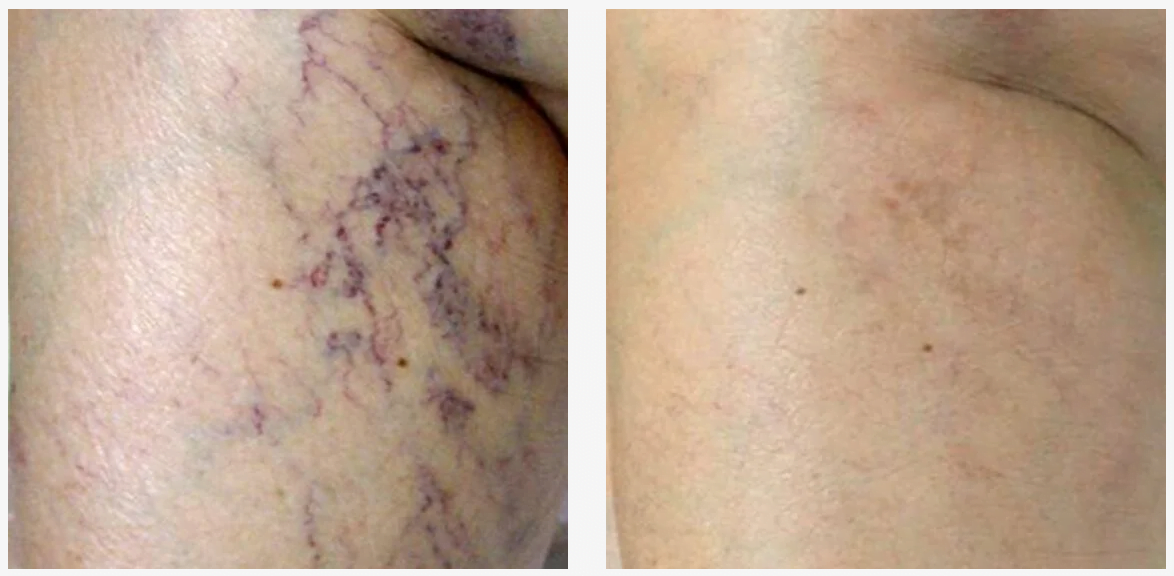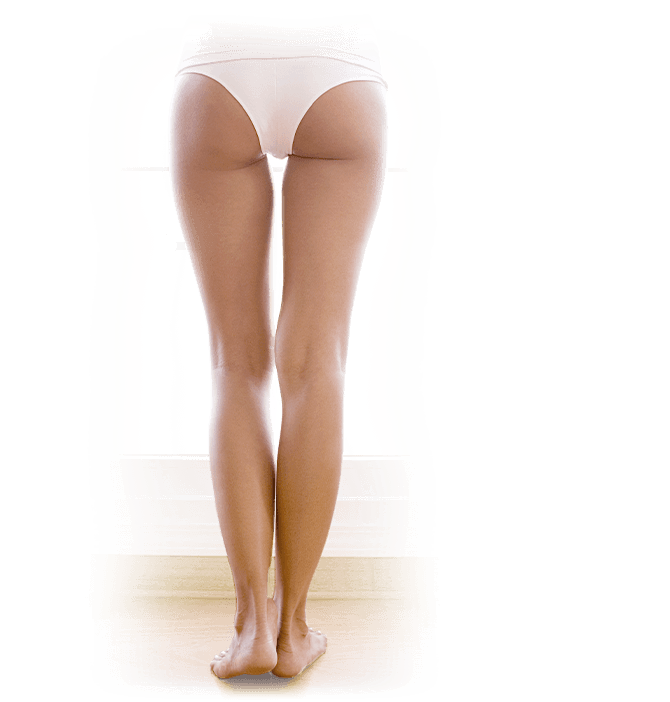Laser Vein Treatments
Spider veins, broken capillaries, and other vascular irregularities are among the most common and bothersome signs of aging for men and women of all skin types. Our licensed laser technicians can help reduce or eliminate these concerns with personalized laser vein treatments.
What is laser vein treatment?
Laser vein treatment, also known as laser vein ablation, is designed to target and diminish the visibility of varicose and spider veins. This technology gently heats and collapses the unwanted veins, resulting in clearer, more youthful-looking skin.
How do laser vein treatments work?
The laser emits a specific energy wavelength that is absorbed by the pigment in the blood, heating the vein without damaging the surrounding tissues. The heat causes the vein to close and eventually be reabsorbed by the body, softening its appearance or even erasing it from view.
“TI have always had an outstanding experience with Dr. Sobel and his staff! From the welcoming atmosphere to the knowledgeable team, every aspect of this office is top-notch.”
Whatever your age, skin type, or concern, our top-of-the-line laser can help you achieve your best skin yet.
With the Elite MPX laser, we can adjust and blend multiple laser wavelengths to safely and effectively treat different skin types and concerns, including:
- Spider veins
- Vascular lesions
- Broken capillaries
- Rosacea
- Redness
The dual-wavelength technology of this laser allows us to target, coagulate, and absorb vessels with immense precision. We can effectively treat red, blue, and purple spider veins on the face, knees, ankles, or elsewhere, and it’s effective for lighter or darker skin tones with little to no downtime.

*Individual results may vary on a case-by-case basis
Preparing for your procedure
Preparation for laser vein treatment involves a consultation with our highly experienced laser technicians to discuss your goals, and medical history, and to determine if you are a good candidate for laser vein treatments. Before your appointment, please ensure the treatment area is clean and free of lotions or makeup.
What to expect during a laser vein treatment
During the procedure, the laser device is applied to the skin, where it emits pulses of light energy that penetrate the vein. The entire process typically takes less than 30 minutes, depending on the area being treated.
Recovery and aftercare
After your treatment, you are free to resume your normal activities immediately. Some patients are advised to wear compression stockings to aid healing. It’s normal to experience slight bruising or swelling, which resolves within a few days to a few weeks.
It is crucial to avoid UV exposure and use a broad-spectrum sunscreen of at least SPF 30 to protect treated areas for faster recovery and best results.
Risks and complications
While laser vein treatment is safe and effective, as with any laser procedure, there are potential risks such as temporary skin discoloration, minor bruising, or sensitivity at the treatment site.
- Key Benefits
- Glossary
- Non-Invasive Procedure: Unlike surgical options that require incisions, laser vein treatments are non-invasive. The laser technology allows veins to be treated through the skin, eliminating the need for incisions, stitches, or a lengthy recovery period.
- Minimal Downtime: Most patients can resume their normal activities almost immediately after treatment, making it a convenient option for those with busy schedules.
- Long-Lasting Results: Once a vein has been successfully treated, it is unlikely to reappear, although new veins may develop over time.
- Blood Clots: Potentially dangerous formations that form when platelets, proteins, and cells in the blood stick together.
- Compression Stockings: A post-treatment recommendation for some patients to aid in the healing process and improve outcomes after laser vein treatment.
- Diosmiplex: A medical treatment used to manage symptoms of chronic venous disease.
- Endovascular Surgery: A minimally invasive surgery technique used to treat problems affecting blood vessels.
- Endovenous Ablation: A procedure that uses heat to treat varicose veins, closely related to the concept of laser vein treatment but may involve different energy sources.
- EVLT (Endovenous Laser Treatment): A specific type of laser vein treatment that uses laser energy to close off and destroy varicose veins.
- Foam Sclerotherapy: An alternative to laser vein treatment, this procedure injects a foam solution into veins to close them off.
- Laser Vein Treatment: A cosmetic surgery procedure that uses laser technology to treat and remove spider veins and varicose veins.
- Local Anesthesia: Used during laser vein treatments to numb the treatment area, for a more comfortable procedure.
- Phlebotonics: Medications that improve vein tone and blood flow, often used alongside procedures like laser vein treatment for venous disorders.
- Sclerotherapy: A treatment for spider veins and varicose veins where a solution is injected to cause veins to collapse, an alternative to laser vein treatment.
- Spider Veins: Small, damaged veins that can appear on the surface of the skin (usually the legs or face), commonly treated with laser vein treatment.
- Telangiectasia: A condition characterized by the appearance of small, red, spider-like veins, treatable with laser vein treatment.
- Thermal Ablation: A technique where heat is used to remove varicose veins.
- Varicose Veins: Large, swollen veins often treated with minimally invasive procedures like laser vein treatment to improve appearance and symptoms.
- Varicosities: Another term for varicose veins.
- Venous Disease: A broad category of conditions that affect the veins, such as varicose veins and spider veins, often treated with laser vein treatments.
- Venous Insufficiency: A condition where the flow of blood through the veins is inadequate, causing symptoms that can be alleviated by laser vein treatment.
- Venous Reflux: A condition that leads to varicose veins and can be treated with laser vein treatment to prevent the backward flow of blood.
Laser Vein Treatment FAQs

Medically reviewed by Dr. Alexander Sobel — Updated on Oct 10, 2024

